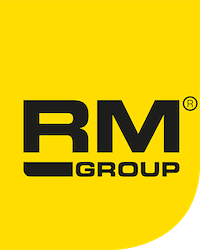One question that comes up very soon in the buying process for a crusher or screen is the choice of drive type. You are soon confronted with a multitude of different drive concepts and have to assess which is the best option for your specific application.
The following is a summary of the available drive types with their advantages and disadvantages to help you make an informed decision.
E-drive system. Zero emissions.
E-drives in mobile crushers and screens make it possible to process material on site quietly and emission-free.
Advantages
Lower operating costs thanks to better efficiency of the electric motor compared to a diesel engine
Permits for sensitive areas
E-drive solutions are often given funding
Lower maintenance costs due to maintenance-free electric motors (diesel engine requires service after 500 h)
Less susceptible to defects because there are fewer moving parts compared to a diesel engine
No problem with fuel quality or impurities in the fuel
Constant final aggregate size and quality thanks to constant torque
Disadvantages
Suitable mains power supply must be available
Investment required in connection costs
Approved electrician is required for connection
More difficult to move to another location because a mains power connection is required.
Diesel – electric drive. Full flexibility with maximum efficiency.
This type of system is also known as a hybrid drive. The diesel engine is the central drive unit, which drives a generator. The crushing rotor and the feeder and discharge belts are driven by electric motors. It can also be operated using electric power only from an external mains supply. Alternatively, it can also be operated using the diesel engine.
Advantages
Due to the efficient drive system, a high level of cost-effectiveness is possible
Lower diesel consumption than diesel-direct or diesel-hydraulic systems
The rotor speed can be variably adjusted using the optional frequency converter. This influences the composition of the final aggregate. The right size distribution of the final aggregate is guaranteed
Disadvantages
More electronic components installed
Total weight of the machine is higher due to the drive technology
Frequency converter is cost-intensive
Diesel – electric drive system with hydraulic pump. A little bit of everything
As the central drive unit, the diesel engine drives both a generator and a hydraulic pump. While the crusher rotor and the discharge belts are driven by the electric motor, the hydraulic pump operates the feed belt
Advantagese
Higher efficiency – more efficient than a diesel-hydraulic drive
Lower diesel consumption compared to diesel-hydraulic systems
Disadvantages
The rotor speed is limited without a frequency converter
Hoher Wartungsaufwand und hohe Kosten aufgrund von großen Motoren und Generatoren
High maintenance and high costs due to large motors and generators.
Large volume of hydraulic oil, complex hydraulic and electrical systems
There is a large hydraulic system and extensive electrical system installed. There is also a high demand for hydraulic oil
Dual Power. High costs for more flexibility.
The Dual Power drive concept involves a diesel engine driving a hydraulic pump. In addition, there is an electric motor that drives a second hydraulic pump. The customer can decide which motor they want to use to drive the hydraulics. This concept does not include a hybrid drive option, however. This type of drive system is mainly offered with screens.
Advantages
Simple technology
Disadvantages
High diesel consumption
High power consumption in E mode
High service costs due to large diesel engine
High hydraulic oil consumption
Diesel-direct drive system with electric auxiliary drives. Efficient and cost-effective.
The diesel engine is the central drive unit that drives the crusher rotor directly via a coupling system. All auxiliary drives, such as the feeder and discharge belts, are driven by electric motors.
Advantages
Efficient drive output
Low service costs due to small diesel engine
Low fuel consumption
Disadvantages
The rotor speed is limited without a frequency converter
More complex technology compared to diesel-hydraulic systems
Diesel-direct drive system with hydraulic auxiliary drives. Proven and simple.

The hydraulic pump is driven by the diesel engine as the central drive unit. The crusher rotor is driven directly by the diesel engine, while the feeder and discharge belts are driven by the hydraulic motors.
Advantages
Large speed range for the rotor
Simple technology
Disadvantages
High diesel consumption
High service costs due to large diesel engine and hydraulic components
High costs and high work requirement when changing hydraulic oil
Diesel – hydraulic drive system. Simple but cost-intensive.

The diesel engine is the central drive unit that drives the hydraulic pump. The crusher rotor as well as the feeder and discharge belts are driven by hydraulic motors.
Advantages
Large speed range for the rotor
Simple technology
Disadvantages
High diesel consumption
High service costs due to large diesel engine and hydraulic components
High costs and high work requirement when changing hydraulic oil
Find out more about the RM product range with diesel-direct, hybrid or e-drive systems here.
Products






